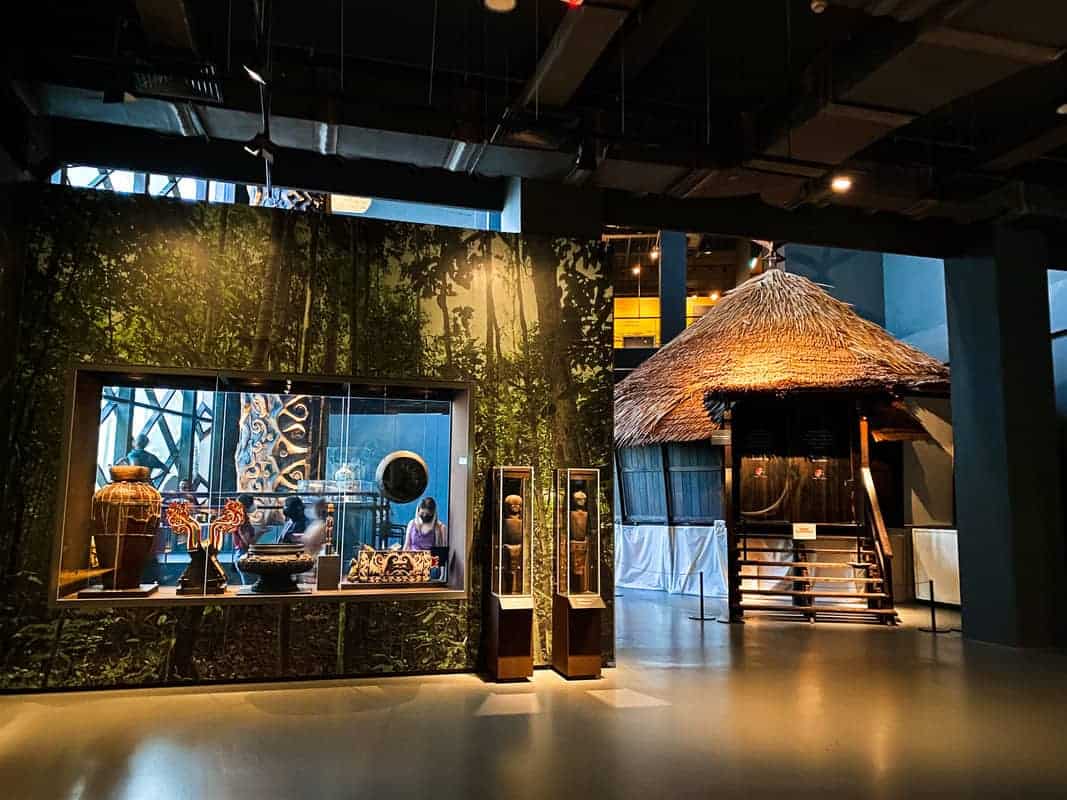Explore the Interesting Globe of Borneo's Cultural Heritage: A Comprehensive Overview to the Cultures Museum Experience
Submersing oneself in the complex tapestry of Borneo's cultural heritage is comparable to starting a voyage via time and tradition. The fusion of aboriginal tribes, traditional inventions, captivating performances, and historical narratives housed within the boundaries of the island's museums uses a look into a globe bristling with extensive heritages and vibrant customs. As visitors traverse with these repositories of society, they are beckoned to discover a realm where past and existing intermingle, inviting consideration on the resilience and splendor of Borneo's varied heritage.
Native Tribes of Borneo
Borneo is home to over 50 indigenous tribes, each with distinct social techniques and customs that have actually been protected for generations. Among these people are the Iban, known for their standard longhouses and intricate tattoos where numerous families live.
These native people play a crucial function in keeping Borneo's abundant cultural tapestry. Visitors to Borneo have the opportunity to engage themselves in the special way of livings of these tribes with social excursions, homestays, and community-based tourism efforts.
Conventional Inventions and Artifacts
One famous example of standard inventions in Borneo is the production of woven goods - Borneo Cultures Museum. Experienced weavers utilize all-natural fibers like pandan, rattan, and bamboo delegates produce complex baskets, floor coverings, and accessories adorned with vivid patterns that hold symbolic significances within the neighborhood
The art of woodcarving is another significant element of Borneo's typical handicrafts. Craftsmens sculpt elaborate layouts into various types of wood to produce masks, sculptures, and music instruments that not just serve practical functions however likewise hold cultural value, usually showing folklore or spiritual beliefs.
Moreover, Borneo is renowned for its beadwork, with craftsmens carefully crafting grains from products like glass, seeds, and coverings to create fashion jewelry, garments embellishments, and attractive products that display the area's lively visual practices. These traditional handicrafts and artefacts not just offer as tangible expressions of Borneo's cultural heritage but also provide insights into the neighborhoods' beliefs, values, and way of living.

Cultural Performances and Festivals
With an ingrained connection to their social practices, the communities in Borneo come to life with vibrant social performances and events that commemorate their heritage. These events display the abundant variety of Borneo's ethnic groups, each offering unique dancings, songs, and routines that have actually been given with generations. Among the most popular festivals is the Gawai Dayak, celebrated by the Dayak people to note the rice gathering season. During this celebration, conventional songs fills up the air, detailed dances are performed, and sophisticated conventional outfits are worn. One more significant occasion is the Pesta Kaamatan, commemorated by the Kadazandusun neighborhood to appreciate for the rice harvest. This event features social efficiencies, consisting of the Sumazau dance, and traditional sports like the bamboo dancing. Site visitors to Borneo can immerse themselves in these celebrations, gaining a deeper understanding of the area's social heritage and experiencing the cozy hospitality of its individuals. page Social efficiencies and events serve as a vibrant suggestion of Borneo's abundant cultural tapestry and the significance of maintaining these practices for future generations.
Historical Narratives and Artifacts
Exploring the historic narratives and artifacts of Borneo offers a remarkable peek into the region's rich past and social advancement. Borneo's historical tapestry is woven with varied influences, showing the communications between indigenous tribes, Chinese investors, European colonizers, and Malay sultanates. The artifacts found in Borneo showcase this complex history, ranging from traditional crafts like intricate beadwork and woodcarvings to archaeological treasures such as ancient ceramic and tools.
Among the most compelling facets of Borneo's historic narratives is the preservation of dental practices passed down with generations. These tales provide insights right into the beliefs, custom-mades, and day-to-day lives of Borneo's residents throughout the centuries. Additionally, the artifacts unearthed from archaeological websites provide substantial links to these narratives, allowing visitors to witness the material culture of past societies firsthand.
Contemporary Cultural Conservation Initiatives

Furthermore, academic programs and cultural exchange activities play a critical function in increasing awareness regarding the importance of maintaining Borneo's distinct social heritage. By engaging institutions, galleries, click resources and the larger community in reference conversations and activities that celebrate Borneo's varied societies, conservation efforts can get momentum and assistance for lasting sustainability. Cooperations in between governmental bodies, charitable organizations, and regional areas are vital in driving these preservation undertakings onward, making sure that Borneo's rich social heritage remains lively and valued for generations to find.
Final Thought
To conclude, the social heritage of Borneo is varied and abundant, with indigenous tribes, typical handicrafts, social performances, events, historic narratives, and contemporary preservation efforts all adding to its uniqueness and importance. Visitors to Borneo's cultural museums can get a much deeper understanding and appreciation of the area's social heritage, permitting for a much more immersive and enlightening experience.
Immersing oneself in the detailed tapestry of Borneo's cultural heritage is comparable to embarking on a voyage with time and practice.With a deep-rooted link to their cultural customs, the communities in Borneo come active via dynamic social performances and events that commemorate their heritage. Cultural performances and celebrations offer as a lively suggestion of Borneo's rich cultural tapestry and the relevance of preserving these customs for future generations.
Moreover, academic programs and social exchange tasks play a crucial duty in increasing recognition regarding the importance of preserving Borneo's distinct social heritage. Partnerships between governmental bodies, charitable companies, and regional areas are necessary in driving these conservation undertakings forward, making sure that Borneo's abundant social heritage stays dynamic and treasured for generations to come.